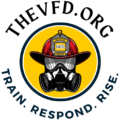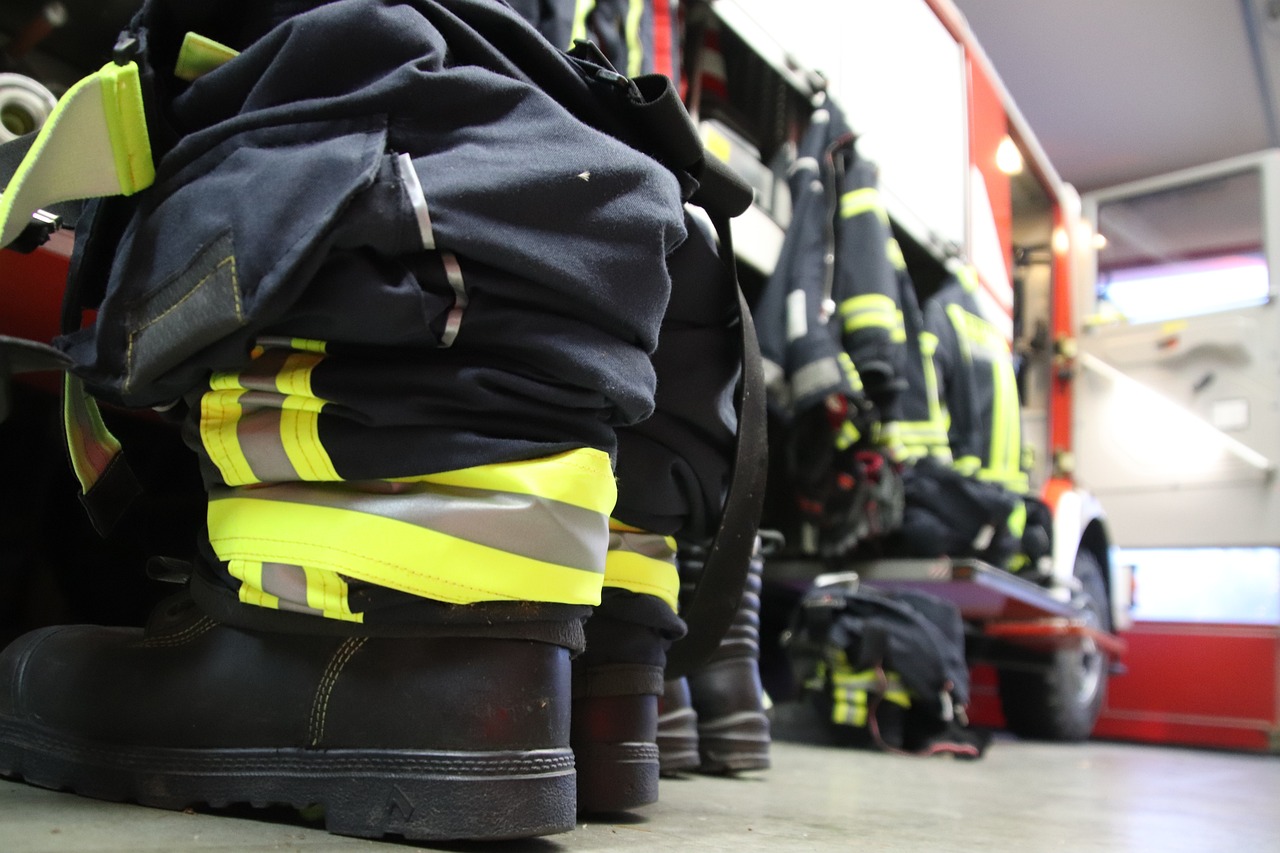Most volunteer fire departments experience an increase in calls during the holiday season, making effective safety communication even more important. In this guide, you will discover practical strategies to enhance your department’s communication methods, ensuring that your community stays informed and safe. From engaging social media campaigns to clear internal communications, you will learn how to curate messages that resonate with both your team and the public. Equip yourself with the tools necessary to foster a proactive safety culture in your department, especially during this busy time of year.
Types of Holiday Safety Communication
For effective holiday safety communication, it’s vital to utilize various forms to relay important messages. Consider employing:
| Type | Description |
|---|---|
| Verbal Communication | In-person or through calls to convey urgent safety messages |
| Written Communication | Informative texts, emails, or flyers that outline safety guidelines |
| Visual Communication | Graphs and images that illustrate safety processes |
| Social Media | Utilizing platforms to share safety reminders and updates |
| Community Events | Engaging the public with workshops or demos |
Knowing the best types of communication to use will enhance your outreach and effectiveness in ensuring safety during the holidays.
Verbal Communication
Communication plays a significant role in conveying messages clearly and efficiently. Use verbal methods to share urgent updates, hold meetings, and foster discussions among team members. This approach allows you to gauge understanding and answer questions on the spot, making your safety messages more relatable and impactful.
Written Communication
There’s power in written communication when it comes to documenting safety procedures and guidelines. You can tailor emails, newsletters, or flyers to reach your audience, ensuring they have access to vital information whenever needed.
Communication through written formats provides a reliable reference point for your team and the community. This ensures that safety measures are not only communicated but can also be revisited during the holiday season. Consider listing clear steps, using bullet points for easy reading, and providing updates as circumstances change.
Visual Communication
Visual tools offer an effective alternative for communicating safety messages. Whether using infographics or diagrams, you can simplify complex information into easily digestible formats. When you incorporate visuals, it can help your audience retain information better and understand safety procedures more distinctly.
Types of visual communication can include charts, posters, and instructional videos that capture attention and create awareness. By integrating visual elements into your safety strategy, you enhance overall comprehension and engagement when sharing vital holiday safety information.
Key Factors Influencing Effective Communication
Now, understanding the key factors influencing effective communication in volunteer fire departments is crucial for conveying holiday safety information. Consider the following elements:
- Audience awareness
- Timing and frequency
- Message clarity
- Medium of communication
This comprehensive approach can enhance your department’s outreach and effectiveness.
Audience Awareness
Factors like demographics, experience levels, and backgrounds of your audience play a significant role in shaping your communication strategy. Tailoring your messages to address the specific concerns and needs of your community helps to engage them more effectively.
Timing and Frequency
If you don’t communicate at the right times, your messages may not be received. Consider the holiday season’s busy nature; it’s vital to deliver information when your audience is most likely to engage with it.
Another important aspect is the frequency of your messages. Consistent communication helps reinforce important safety themes without overwhelming your audience. Scheduling reminders and follow-ups at strategic intervals can ensure your safety information is top of mind during the holidays.
Message Clarity
Timing is crucial for ensuring your messages remain clear and concise. The simpler your communication, the better it will resonate with your audience, especially during a busy holiday season.
Understanding how to articulate your messages effectively means using straightforward language and avoiding technical jargon. Clear visuals and bullet points can also enhance understanding, making it easier for your audience to grasp critical safety information quickly.
Tips for Enhancing Holiday Safety Communication
Keep your lines of communication clear and accessible to ensure everyone is informed this holiday season. Consider implementing the following strategies:
- Utilize multiple communication channels, such as social media and text alerts.
- Distribute easy-to-follow safety guides to all members.
- Schedule regular safety meetings and updates.
- Encourage feedback and suggestions from volunteers.
Perceiving the importance of proactive communication can significantly improve safety outcomes during busy holiday events.
Use of Technology
Enhancing your use of modern technology can streamline safety communication within your department. Consider leveraging applications for real-time updates, notifications, and organizing schedules for training or events. This ensures volunteers can access critical information quickly and stay informed about holiday safety protocols.
Engaging Community Members
With an engaged community, you can foster awareness and promote holiday safety. Actively involve local residents in volunteer events, safety programs, and informational sessions. This connection not only strengthens relationships but also amplifies your department’s ability to disseminate safety information effectively.
Plus, community members can serve as valuable allies in promoting safety messages. Encourage them to share safety resources on social media and participate in local activities to raise awareness. By building a network of informed citizens, you strengthen the community’s overall resilience and preparedness for the holiday season.
Training and Drills
Little attention to training and drills can lead to communication gaps during critical moments. Ensure that your department regularly practices holiday safety scenarios, giving volunteers the chance to familiarize themselves with protocols and techniques. This hands-on experience can enhance confidence and efficiency when addressing actual emergencies.
Another effective strategy is to integrate feedback from drills into your communication strategy. Analyze participants’ responses and adjust your training materials based on observed challenges. Consistently refining your drills ensures that your team is well-prepared, offering an opportunity to tailor safety messaging that resonates with all members before holiday events unfold.
Step-by-Step Guide to Implementing Communication Strategies
Unlike many organizations, effective communication strategies in volunteer fire departments require a structured approach. By breaking down your strategy implementation into manageable steps, you can ensure a clear and effective flow of information. Below is a table to guide your process:
| Step | Description |
|---|---|
| 1. Assess Current Practices | Evaluate existing communication methods and identify areas for improvement. |
| 2. Set Clear Objectives | Establish specific goals to guide your communication efforts. |
| 3. Implement Strategies | Put your communication plans into action, involving all relevant members. |
| 4. Evaluate Outcomes | Measure the effectiveness of your strategies and adjust as necessary. |
Assessing Current Practices
For effective communication, you must first assess your current practices. Analyze your existing methods, such as meetings, emails, and notices, to identify strengths and weaknesses. Gathering feedback from your team will help you understand their perspectives, which can inform improvements moving forward.
Setting Clear Objectives
On setting objectives, it’s important to define what you want to achieve with your communication strategy. Clear goals such as improving response times or enhancing community outreach will guide your efforts and keep everyone focused on the priorities that matter most.
Implementing measurable objectives can help you assess progress over time. Consider specific outcomes, such as increasing engagement during safety drills or achieving a higher participation rate in community events. This clarity allows you to allocate resources effectively and adjust strategies to meet your goals.
Evaluating Outcomes
On evaluating outcomes, examine how your communication strategies have impacted your department’s operations and community interactions. Feedback and performance metrics can provide insights into what’s working and what needs adjustment to ensure your objectives are met.
Current evaluations will not only help you identify successes but also shed light on areas needing more focus. Regularly reviewing your communication outcomes encourages continuous improvement, ensuring your strategies remain relevant and effective in addressing both internal needs and community relations.
Pros and Cons of Various Communication Methods
Many methods of communication exist for conveying holiday safety information within volunteer fire departments. Each method has its strengths and weaknesses, making it crucial to evaluate them for your organization’s needs.
| Pros | Cons |
|---|---|
| Allows real-time feedback | Can be time-consuming |
| Builds personal connections | May not include a wider audience |
| Easily accessible | Requires internet access |
| Generates ongoing documentation | Can be perceived as impersonal |
| Cost-effective for mass distribution | Limited engagement opportunity |
Face-to-Face Communication
Now that you’ve assessed various methods, consider the benefits of face-to-face communication. This technique fosters immediate interaction and allows for clearer expression of ideas and emotions, strengthening team cohesion.
Digital Platforms
There’s an increasing trend toward utilizing digital platforms for communication. These tools can streamline information sharing, making it easier for members to access updates and engage with safety protocols at their convenience.
Pros for digital platforms include instant access to resources and the ability to reach a larger audience. Scheduling video meetings or webinars allows you to engage multiple team members, ensuring everyone is on the same page. Additionally, social media and messaging apps can facilitate quick inquiries and updates, enhancing overall responsiveness.
Printed Materials
Platforms such as flyers and brochures remain effective communication tools for holiday safety information. Your members may find tangible materials helpful, as they can be shared easily and referred to at any time.
The physical nature of printed materials allows you to reach individuals who may not engage with digital methods. Distributing printed materials during events or meetings ensures that your key messages are visible and readily available, helping you reinforce safety protocols among all volunteers.
Common Challenges and Solutions
To effectively enhance holiday safety communication in volunteer fire departments, you must navigate various challenges. Miscommunication, limited resources, and engaging a diverse audience are frequent hurdles. By identifying these obstacles and implementing targeted solutions, you can create a robust communication plan that elevates safety awareness within your community, ensuring everyone is well-informed and prepared.
Overcoming Miscommunication
While miscommunication can lead to confusion and gaps in safety instructions, you can address this challenge by establishing clear channels for dialogue. Utilize specific messaging techniques, such as repetition and clarification, to ensure that your audience receives consistent information. Encourage feedback from volunteers and community members to address misunderstandings promptly.
Engaging Diverse Audiences
Little attention can sometimes be given to the varying backgrounds and needs of your audience, which is imperative for effective safety communication. Tailoring your messages to resonate with different demographics can significantly enhance engagement and comprehension.
Overcoming this challenge involves proactively identifying the distinct characteristics of your audience, such as age, cultural background, and prior experiences with emergencies. You can create targeted materials that reflect these differences, allowing for a more inclusive approach. Additionally, using multiple platforms—like social media, community meetings, and culturally relevant languages—enables you to reach a broader audience. By fostering an inclusive communication strategy, your efforts in promoting holiday safety will resonate more profoundly with every community member, ultimately leading to a safer environment for all.
Conclusion
Considering all points, implementing comprehensive how-to strategies for effective holiday safety communication in your volunteer fire department is crucial for safeguarding your community. By enhancing your messaging and ensuring that all team members are informed and engaged, you can foster a proactive culture around safety. Utilize various communication tools and platforms to reach diverse audiences effectively. Prioritize training and regular updates to keep your information relevant and impactful, allowing you to navigate the holiday season with confidence and safety in mind.


